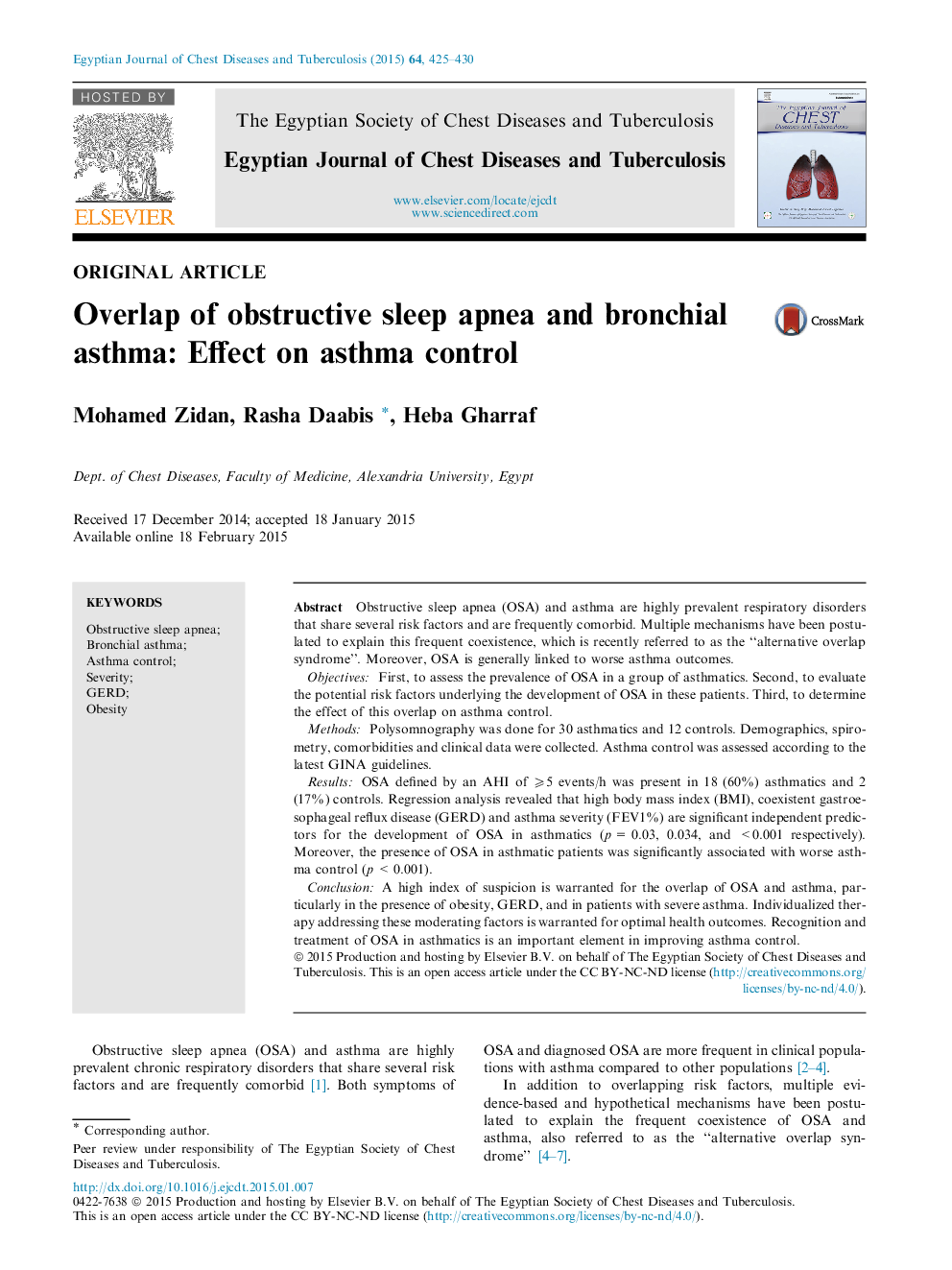| Article ID | Journal | Published Year | Pages | File Type |
|---|---|---|---|---|
| 3399989 | Egyptian Journal of Chest Diseases and Tuberculosis | 2015 | 6 Pages |
Obstructive sleep apnea (OSA) and asthma are highly prevalent respiratory disorders that share several risk factors and are frequently comorbid. Multiple mechanisms have been postulated to explain this frequent coexistence, which is recently referred to as the “alternative overlap syndrome”. Moreover, OSA is generally linked to worse asthma outcomes.ObjectivesFirst, to assess the prevalence of OSA in a group of asthmatics. Second, to evaluate the potential risk factors underlying the development of OSA in these patients. Third, to determine the effect of this overlap on asthma control.MethodsPolysomnography was done for 30 asthmatics and 12 controls. Demographics, spirometry, comorbidities and clinical data were collected. Asthma control was assessed according to the latest GINA guidelines.ResultsOSA defined by an AHI of ⩾5 events/h was present in 18 (60%) asthmatics and 2 (17%) controls. Regression analysis revealed that high body mass index (BMI), coexistent gastroesophageal reflux disease (GERD) and asthma severity (FEV1%) are significant independent predictors for the development of OSA in asthmatics (p = 0.03, 0.034, and <0.001 respectively). Moreover, the presence of OSA in asthmatic patients was significantly associated with worse asthma control (p < 0.001).ConclusionA high index of suspicion is warranted for the overlap of OSA and asthma, particularly in the presence of obesity, GERD, and in patients with severe asthma. Individualized therapy addressing these moderating factors is warranted for optimal health outcomes. Recognition and treatment of OSA in asthmatics is an important element in improving asthma control.
